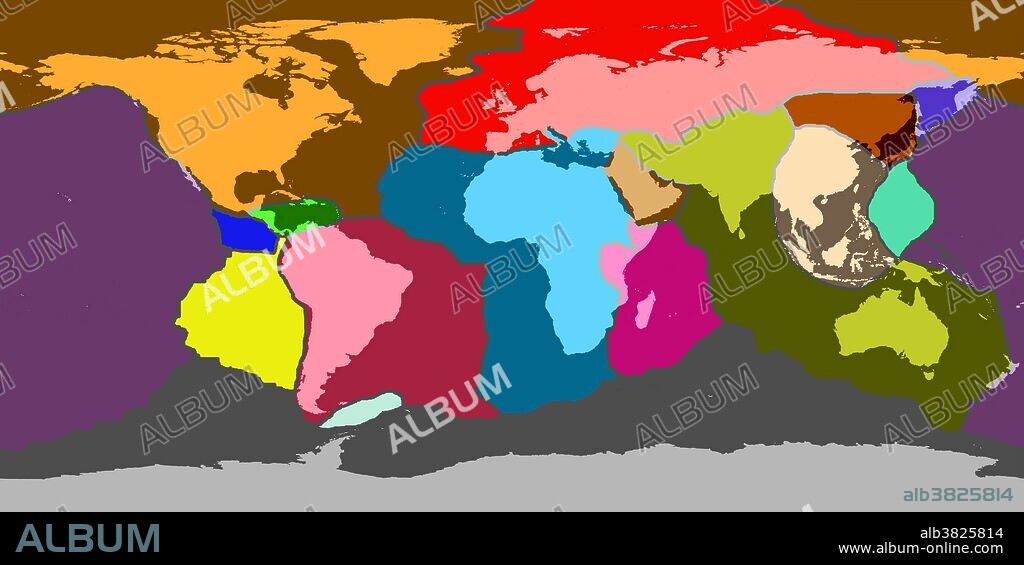alb3825814
Earth's Tectonic Plates

|
Add to another lightbox |
|
Add to another lightbox |



Title:
Earth's Tectonic Plates
Caption:
Earth's tectonic plates. The Earth's surface is divided up into several major plates. These are rocky slabs that float and move on the more fluid layer beneath them. The boundaries between plates are geologically active areas where the majority of the world's volcanoes and earthquakes occur. Plate tectonics, the study of the plates, has revealed a huge amount about the Earth. For instance, South America's east coast appears to fit into Africa's west coast because they were once joined; the plates that hold them are moving apart. Also, where the Indian plate collided with the Eurasian plate, the Himalayas were formed. The seven major plates shown here include the Pacific Plate (dark purple), North American Plate (orangey-brown), African Plate (blue), Eurasian Plate (red), South American Plate (pink), Indo-Australian Plate (olive green), and the Antarctic Plate (grey). Some other plates include the Arabian Plate (brown), Nazca Plate (yellow), Cocos Plate (cobalt), Caribbean Plate (bright green) Scotia Plate (off-white), Philippine Plate (turquoise), Somali Plate (bright purple), Indo-Chinese Plate (greyish-brown), Amur Plate (dark brown), and the adjacent Okhotsk Plate (purplish-blue).
Credit:
Album / Science Source / Jessica Wilson/NASA
Releases:
Model: No - Property: No
Rights questions?
Rights questions?
Image size:
4500 x 2250 px | 29.0 MB
Print size:
38.1 x 19.1 cm | 15.0 x 7.5 in (300 dpi)
Keywords:
AFRICAN PLATE • AMUR PLATE • ANTARCTIC PLATE • ARABIAN PLATE • ART • ARTWORK • ASIA • AUSTRALIA • CARIBBEAN PLATE • CHINA • COCA PLATE • COCOS PLATE • COMPUTER GRAPHIC • CONTINENT • EARTH • EURASIAN PLATE • FAULT LINE • FAULT • FILIPINO PLATE • FLEET • GEOLOGIA • GEOLOGY • GLOBAL • HOTSPOT • ILLUSTRATION • ILLUSTRATIONS • INDIAN PLATE • INDO-AUSTRALIAN PLATE • INDO-CHINESE PLATE • INDONESIA • JAPAN • JUAN DE FUCA PLATE • MALAYSIA • MANTLE PLUME • MAP • MARINE • NASCA PLATE • NAVY • NAZCA PLATE • NEW ZEALAND • NORTH AMERICA • NORTH AMERICAN PLATE • NORTH AMERICAN • OCEAN • OCEANIA • OKHOTSK PLATE • OUTLINE • PACIFIC PLATE • PHILIPPINE PLATE • PLATE CONTOUR • PLATE MARGIN • PLATE TECTONICS • SCOTIA PLATE • SEA • SEAS • SEISMOLOGY • SOMALI PLATE • SOUTH AMERICA • SOUTH AMERICAN PLATE • TECTONIC PLATES • TECTONIC • VOLCANOLOGY • VULCANOLOGY • WORLD
 Pinterest
Pinterest Twitter
Twitter Facebook
Facebook Copy link
Copy link Email
Email

